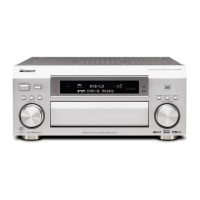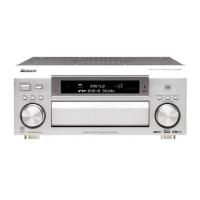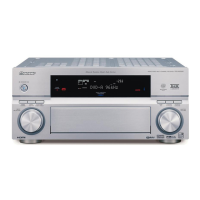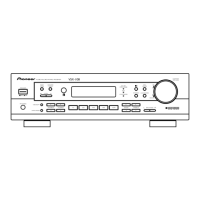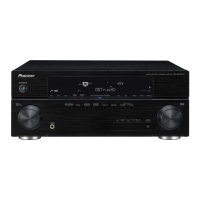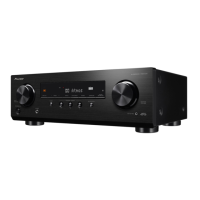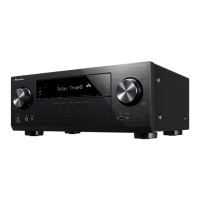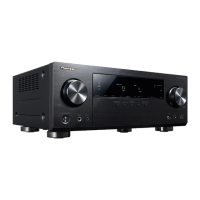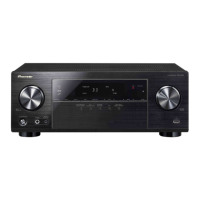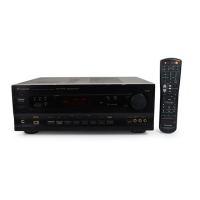Why is my Pioneer VSX-AX3-S subwoofer output very low?
- Ccarlos50Sep 4, 2025
Settings may be routing signal away from the subwoofer. To get more signal to the subwoofer, set it to PLUS or choose SMALL for the front speakers.

Why is my Pioneer VSX-AX3-S subwoofer output very low?
Settings may be routing signal away from the subwoofer. To get more signal to the subwoofer, set it to PLUS or choose SMALL for the front speakers.
Why is sound produced from some components, but not from digital components on my Pioneer VSX-AX3-S Receiver?
The SIGNAL SELECT may be set incorrectly, so set it to AUTO or according to the type of connections made. The digital inputs may be assigned incorrectly, or not at all, so set the digital input settings correctly. Ensure the digital components are connected properly. The player may not be compatible with the source you’re using, or the player settings are incorrect, so choose a compatible source, or check the player’s manual for the correct settings. If MULTI CH IN mode has been selected, choose one of the listening modes to switch it off automatically. The digital output level may have been turned down on a CD player or other component, so set the digital volume level of the player to full, or to the neutral position.
Why is there no sound output from one set of speakers on my Pioneer Receiver?
The speaker system setting may be set to NO, so change it to YES. Also, the speaker may not be connected properly, so check all connections. The source may have no sound output for that channel, so choose one of the SURROUND listening modes to create a channel for the speaker. The speaker output level may be set too small, so increase it.
Why does my Pioneer VSX-AX3-S Receiver suddenly switch off during loud playback?
The protection circuit may have been activated because the impedance of your speakers is too low. Try turning down the volume. Additionally, you can lower the 63 Hz and 125 Hz equalizer levels using the manual setting in ACOUSTIC CAL EQ. Also, turning DIGITAL SAFETY on may allow you to turn up the volume a little more. To do this, from Standby mode, hold down the MULTI JOG CONTROL SET UP button and press the STANDBY/ON button.
What does THDCT NG blinking in the display of my Pioneer Receiver mean?
The thermistor (temperature sensor) is broken. Turn the receiver off, unplug it from the wall, and call a Pioneer-accredited repair center to look at the problem.
What to do if OVERHEAT blinks in the display and no sound is output from my Pioneer VSX-AX3-S Receiver?
The receiver has gotten too hot. Turn it off and allow it to cool down with good ventilation. It is very likely that you have a heat dispersal and ventilation problem so please follow the instructions in 'Installing the Receiver'.
What does FAN STOP blinking in the display of my Pioneer VSX-AX3-S mean?
Something may be stuck in the fan, or the fan is broken. Remove any foreign object from the fan. If you can’t do this, or the fan is broken, call a Pioneer-accredited repair center to look at the problem.
What does AMP ERR blinking in the display of my Pioneer Receiver mean?
The receiver probably has a serious problem. Do not try to turn on the receiver. Call a Pioneer-accredited repair center to look at the problem.
Why is there no sound output from surround or center speakers on my Pioneer VSX-AX3-S Receiver?
The speaker settings may be incorrect, so check the SPEAKER SETTING. Also, the surround or center speakers may not be connected properly, so check all connections. Finally, the listening mode might be set to STEREO; choose a surround listening mode instead.
Why is there no sound output from the front speakers of my Pioneer VSX-AX3-S Receiver?
The front speakers may not be connected properly. Check all connections to ensure they are secure.
Provides guidelines for proper installation to ensure adequate heat radiation and prevent overheating.
Warns against blocking ventilation slots to prevent fire hazard and ensure reliable operation.
Specifies optimal temperature and humidity conditions and locations to avoid for operation.
Advises on setting voltage selectors correctly for specific regions and warns about incorrect settings.
Describes the MCACC system for automatic surround sound setup and parameter adjustment.
Highlights support for advanced audio formats and high-definition video compatibility.
Lists all accessories included with the product to ensure completeness upon purchase.
Provides instructions for loading batteries into the remote control for operation.
Introduces fundamental concepts of home theater sound systems and factors contributing to surround sound.
Explains how to connect a DVD player and TV using digital and analog audio/video connections.
Provides instructions for connecting speakers, including front, center, surround, and surround back channels.
Guides through the automatic MCACC system setup for optimal surround sound configuration.
Explains how to connect the TV using S-video or composite video cords for signal transmission.
Provides specific instructions for connecting a DVD player, including digital and analog audio connections.
Guides connecting players with multichannel analog outputs for high-resolution audio formats.
Details connecting various speaker configurations, including surround back speakers and impedance recommendations.
Explains the functions of all controls and indicators on the receiver's front panel.
Details the buttons on the remote control and their functions for operating the receiver.
Explains the meaning of various indicators and symbols shown on the receiver's display.
Describes all terminals and connectors located on the rear panel of the receiver.
Provides access to surround sound configuration options, including Auto, Normal, and Expert settings.
Offers manual adjustment of sound parameters for surround sound, overriding auto settings.
Explains how to balance speaker sound output levels using manual or automatic test tones.
Guides on setting speaker distances to adjust delay times for improved sound depth and separation.
Instructions on how to play sound sources and adjust volume for stereo and multichannel audio.
Explains how to select input signals (AUTO, ANALOG, DIGITAL) for proper source playback.
Describes various listening modes (MOVIE, MUSIC, STEREO, DIRECT) for different audio sources and preferences.
Details various MOVIE listening modes, including pure decoding and DSP modes for enhanced movie soundtracks.
Explains how to use the ACOUSTIC CAL EQ feature for sound calibration and equalization.
Provides steps for tuning FM and AM radio broadcasts using automatic or manual methods.
Instructions on memorizing up to 30 radio stations in 3 classes for quick recall.
Introduces the Radio Data System (RDS) and its features like Program Service Name and Program Type search.
Guides on programming the remote control to operate other audio/video components using preset codes.
Describes the learning mode for programming new commands from other remote controls.
Explains how to set the direct function for external video sources to allow remote control without changing the receiver mode.
Guides on making recordings from one component to another, covering analog and digital connections.
Explains setting up a second zone of stereo speakers using surround back terminals.
Guides on programming multi-button operations to control multiple components sequentially.
Explains how to program a single button to turn off the receiver and other connected components.
Allows selection of decoding methods for THX CINEMA mode, enhancing 2-channel source playback.
Guides on assigning digital inputs to specific components for proper remote button correspondence.
Provides advanced settings for fine-tuning surround sound, building upon basic setups.
Determines frequency division between subwoofer and speakers for optimal bass management.
Allows precise balancing of sound output levels for each speaker.
Guides on adjusting speaker delay times for improved sound depth and separation.
Explains using Auto Surround Sound Setup or manual EQ adjustments for room acoustics.
Guides on limiting peak levels for the LFE channel to prevent distortion from ultra-low bass tones.
Explains Dolby Digital surround sound format, its features, and dialog normalization.
Details DTS Extended Surround format for enhanced 6.1 channel surround sound with surround back channels.
Introduces THX technology for accurate cinema sound presentation, including features like Re-Equalization.
Addresses power-related issues like unit not turning on or switching off during loud playback.
Provides solutions for when the setup screen is not displayed, checking connections and settings.
Addresses issues with low subwoofer output, checking settings and connections.
Guides on troubleshooting lack of video output by checking connections and input selections.
Lists common causes and remedies for the remote control not functioning, such as battery issues or obstacles.
Lists manufacturers and their corresponding remote control preset codes for DVD players.
Details the continuous power output specifications for different speaker channels.
Lists the maximum output power specifications for the multi-voltage model.
